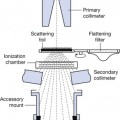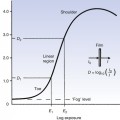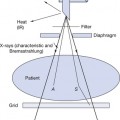Chapter 2 Power sources for radiation production
Chapter contents
2.1 Aim
This chapter explains how energy is obtained to produce radiations in diagnostic and therapeutic radiography. There are a range of devices to be considered, including X-ray generators, linear accelerators, ultrasound machines and magnetic resonance imaging (MRI) scanners. This variety of equipment contributes to making modern radiography an exciting and powerful tool for diagnosis and treatment.
2.2 Obtaining energy for radiation production
As will be seen in Chapter 3, energy cannot be created out of nothing, but may be converted from one form to another. This principle is called the law of conservation of energy. It is a bit like saying that we must have cash in our bank account before we can make a purchase, with no borrowing permitted! So we must have energy available before we can produce the range of radiations that are used in diagnostic and therapeutic radiography. Normally the production of radiations in radiography involves a conversion of electrical energy into wave energy, via various stages. These waves are either electromagnetic (see Ch. 17) or sound (see Ch. 42). At this point it would be useful to identify the types of radiations that we will encounter. These include X-rays, sound waves and radio waves.
Most of the radiations used in radiography can be regarded as ‘waves’ (this topic is covered in Ch. 17) and may be divided into two major types – ionizing and non-ionizing:
• Ionizing radiations have sufficient energy to remove electrons from atoms, in a process which is of course termed ionization. You will probably already know that electrons are small negatively charged particles which orbit the nuclei of atoms. Atoms are the fundamental building blocks of matter and can group together to form molecules and extended structures in living and non-living things. More can be learnt about atoms in Chapter 18. The process of ionization can break chemical bonds in the DNA of living cells, resulting in damage. X-rays are a type of ionizing radiation.
• Non-ionizing radiations include the sound waves used in ultrasound, and radio waves used in MRI. These radiations are less energetic than X-rays, but can agitate body tissues to some extent, generating heat. The biological effects of these radiations are not thought to result in long-term harm. Sound has a special place among the radiations used in radiography, as it is not electromagnetic (see Ch. 17) and is transmitted via vibrations passing through atoms and molecules.
All of the above mentioned radiations – X-rays, sound waves and radio waves, are ‘generated’ by man-made devices. These devices have to be powered in order to produce the radiations. Table 2.1 summarizes the commonly used power sources found in radiography.
Table 2.1 Sources of power for the radiations found in radiography








